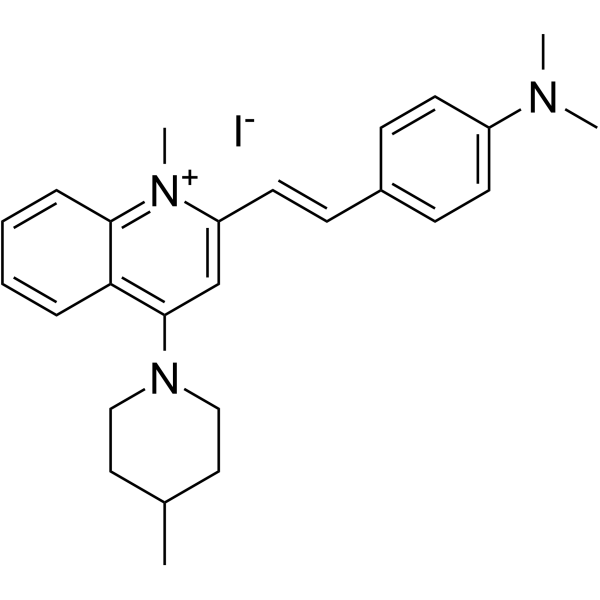| Description |
FtsZ-IN-1 is a potent FtsZ inhibitor with quinolinium ring. FtsZ-IN-1 has stronger antibacterial activity against Gram-positive bacteria with MICs of 0.5-8 μg/mL. FtsZ-IN-1 significantly causes cell elongation of B. subtilis by enhancing FtsZ polymerization. FtsZ-IN-1 exhibits low hemolytic toxicity and low tendency to induce drug resistance. FtsZ-IN-1 has against drug-resistant bacteria activity[1].
|
| Related Catalog |
|
| Target |
FtsZ[1]
|
| In Vitro |
FtsZ-IN-1 (compound A3) inhibits effectively the growth of S. aureus with MICs of 0.5-1 μg/mL, and generally displays less antibacterial potency against most Gram-negative bacteria tested such as E. coli ATCC 8739 (MIC = 64 μg/mL) and P. Aeruginosa ATCC 27853 (MIC >64 μg/mL)[1]. FtsZ-IN-1 exhibits MBCs of 4-8 μg/mL and MICs of 1-4 μg/mL against S. aureus, B. subtilis and E. faecium[1]. FtsZ-IN-1 (0-24 μg/mL; 24 hours) inhibits the growth of S. aureus in a bacteriostatic mode at 1×, 2×, 4× MIC concentrations, and kills S. aureus at 8× MIC concentration[1]. FtsZ-IN-1 can restore the antibacterial activity of methicillin against MRSA in a synergistic manner, with MIC of 2 μg/mL[1]. FtsZ-IN-1 (2 μg/mL; 4 hours) can enlarge cell size of B. subtilis and inhibits bacterial cell division[1]. FtsZ-IN-1 (0-15 μg/mL; 48 hours) exhibits IC50s of 12.77 and 9.42 μg/mL in L929 and HK-2 cells[1]. FtsZ-IN-1 (2 μg/mL) can effectively delay the induction of drug resistance[1]. Cell Cytotoxicity Assay Cell Line: L929 and HK-2 cells[1] Concentration: 0-15 μg/mL Incubation Time: 48 hours Result: Exhibited IC50s of 12.77 and 9.42 μg/mL in L929 and HK-2 cells.
|
| In Vivo |
FtsZ-IN-1 (1-64 μg/mL; 1 hour) exhibits low hemolytic toxicity in mice erythrocytes (from Kunming mice) with IC5 of 64 μg/mL[1].
|
| References |
[1]. Zhong DX, She MT, Guo XC, et al. Design and synthesis of quinolinium-based derivatives targeting FtsZ for antibacterial evaluation and mechanistic study. Eur J Med Chem. 2022;236:114360.
|
